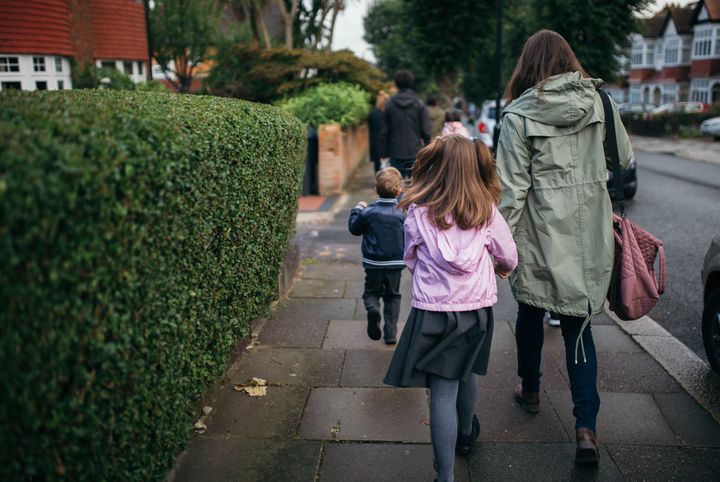
As a parent, I know all too well the mornings can be a fraught routine to get children to school safely and on time. As we negotiate breakfast, the rejection of the “wrong” tights, the assertion for the “right” shoes, the discovery of the forgotten section of homework, the clock rapidly counts down to the rigorously policed deadline of the school bell.
On the way to school, we hold our children’s hands as we cross the road and navigate busy pavements filled with scooters, commuters and people on their phones. Understandably, the quality of air our children breathe on the route and in the playground is often not a concern that factors in to parent’s morning list of preoccupations. And nor should it be another burden for us to shoulder.
Unicef UK’s new research today has found that children are exposed to more than 60% of their daily air pollution intake during the school run and while at school, despite spending less than half their time in these places.
The study focuses on black carbon, which is a form of particulate matter. These tiny particles are the most dangerous pollutant for our health because they can penetrate deep into our lungs and enter the bloodstream and brain. For babies and children, who are in critical stages of development, exposure can stunt their lung and brain growth and cause life-long respiratory conditions, such as asthma.
The alarming results were retrieved from air pollution monitors worn by children throughout the day, providing clear evidence of when and where they are most exposed. These findings follow research earlier this year that revealed one in three children in the UK is growing up in areas with unsafe levels of air pollution.
While every parent’s priority to our children is their good health, air pollution is an invisible threat that is often easily overlooked. However, it is estimated the health effects from air pollution exposure cost the NHS and social care services over £40 million each year. And as evidences continues to emerge linking air pollution to children’s ill health, it is clear that not enough is being done to protect society’s most vulnerable from the harmful effects of toxic
air.
While there is no magic solution to reduce children’s exposure to toxic air, change is possible. Many schools and councils across the country are carrying out amazing projects to protect children from air pollution. We’ve seen schools and nurseries introducing green walls, organising street closures, developing clean air education programmes and even launching their own anti-idling campaigns outside school gates.
Unicef UK is working in schools to help children learn about the effects of toxic air and their right to grow up in a clean, healthy environment. By helping children to better understand their risk and how they can protect themselves, they can use their own voices to contribute to the change they need. If you’re connected to a school or a youth group then get them to sign up now -
https://www.unicef.org.uk/rights-respecting-schools/outright/.
Of course, the solution is not one-size-fits-all and the right approach will differ from one place to the next. One school has a poorly positioned bus stop by the playground, another has need of a route that avoids a main road. The bottom line is that parents, schools, councils and organisations like Unicef UK cannot tackle this problem all alone – nor should we.
What we need is a rapid scale-up of protective measures, supported by a strong evidence of what works where and when. These measures need to be implemented in a holistic way that delivers maximum benefits for children’s health.
Growing up in a safe and clean environment is a right for every child. We wouldn’t give our children dirty water to drink, so why is it acceptable for them to breathe toxic air? It’s time for the Government to take critical action before irreversible damage is done to children’s health and their futures. That means setting out a national strategy, supported by a ring-fenced funding pot to prioritise and implement interventions which protect children from the harmful
effects of air pollution, when and where they are proven to be most at risk.
To join Unicef UK’s campaign to protect children’s right to breathe clean air, visit: https://www.unicef.org.uk/campaign-with-us/
